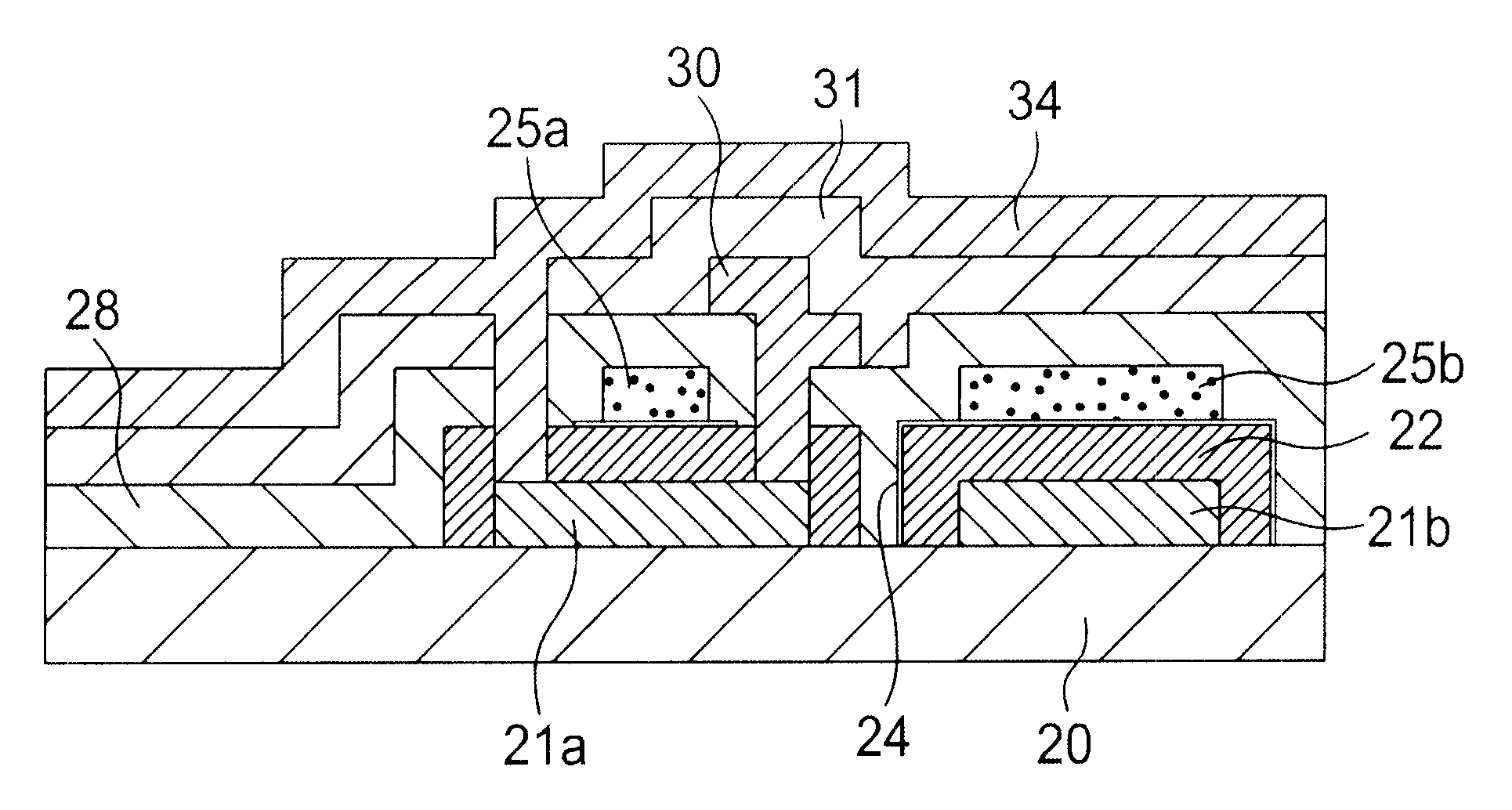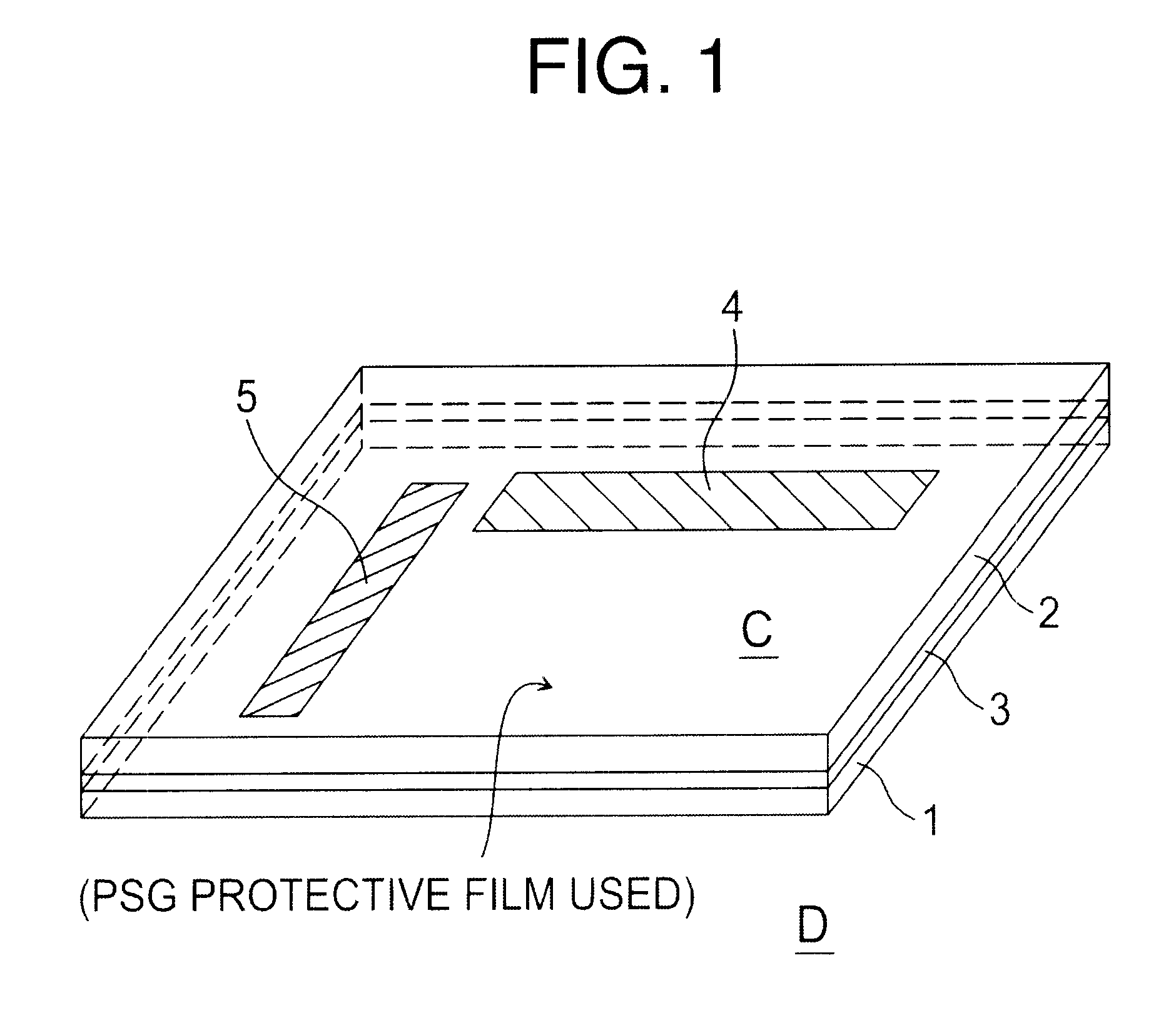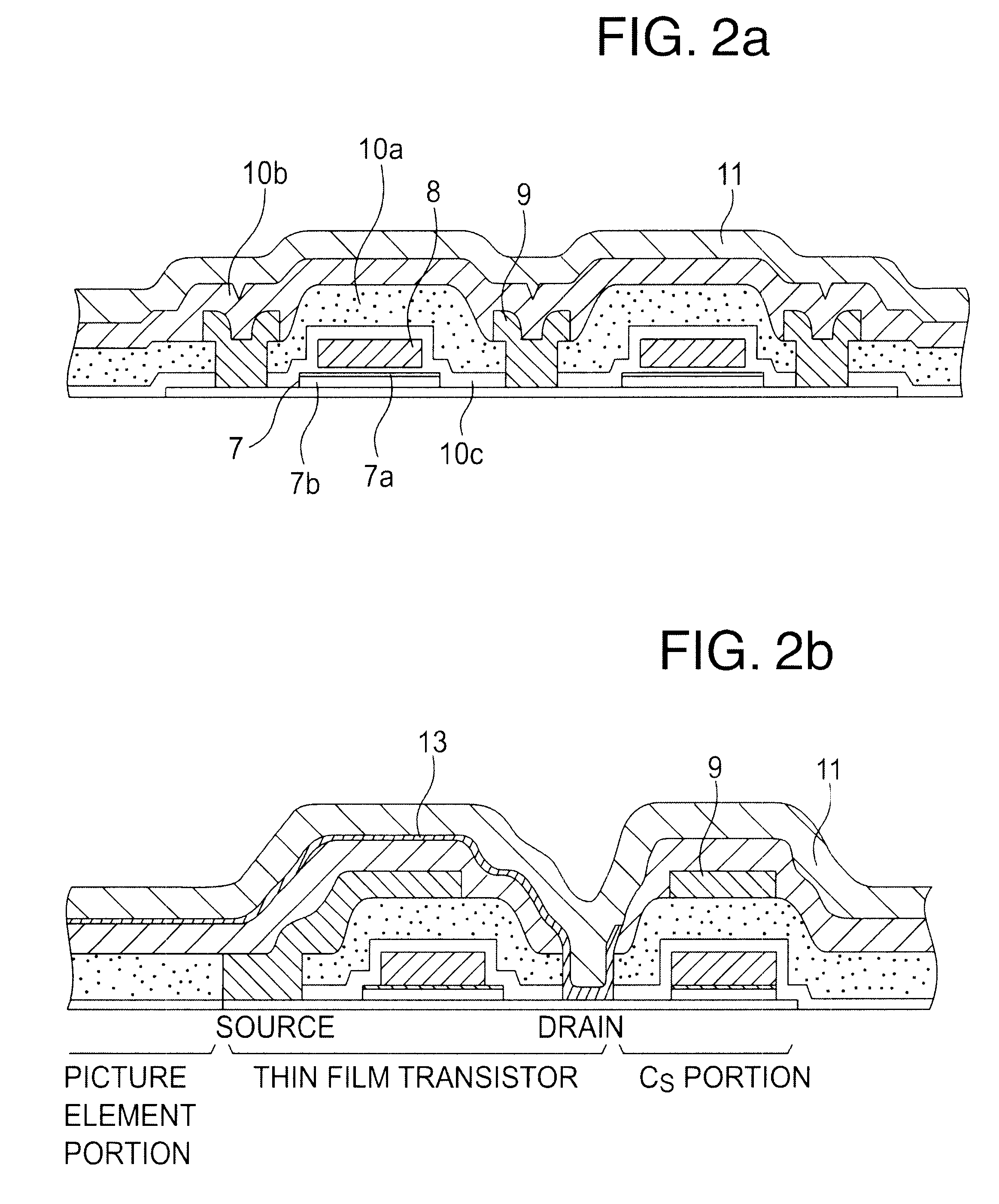Liquid crystal display device
a liquid crystal display and monolithic technology, applied in semiconductor devices, instruments, optics, etc., can solve the problems of film stress left in the sin layer, disadvantageous impeded adhesion and uniformity of the polyimide orientation film, and inability to adjust the characteristics of the transistor
- Summary
- Abstract
- Description
- Claims
- Application Information
AI Technical Summary
Benefits of technology
Problems solved by technology
Method used
Image
Examples
first embodiment
In the first embodiment, the silicon nitride film is completely removed in the fabrication process. The complete removal of the silicon nitride film is advantageous as stated hereinabove. However, there may be some possibility that the hydrogen atoms diffused in the polysilicon thin film may be released owing to the stress which has been imparted after the hydrogenation treatment. This eventually leads, more or less, to degradation of electric characteristics of the transistors. The stresses may include ashing of the photoresist, plasma damages produced during the formation of the contact hole and thermal damages generated during annealing of the picture element electrode. In addition, breakage of metallic wirings may occur due to the use of etchants during the fabrication process.
In order to avoid these defects and further improve the reliability of the liquid crystal display device, there is provided a second embodiment of the invention wherein the silicon nitride is left selectiv...
second embodiment
the invention is particularly described with reference to FIGS. 22 to 25.
FIGS. 22a and 22b, respectively, show a peripheral circuit region and a picture element region similar to FIGS. 2a and 2b illustrating the first embodiment.
As shown in FIG. 22a, there is shown a lower substrate 101 which includes a patterned first polysilicon film 2, with which a thin film transistor is made. In this instance, the transistor has a CMOS structure contained in a peripheral circuit such as, for example, a horizontal drive circuit or a vertical drive circuit. The CMOS structure is comprised of a N-channel thin film transistor 103 and a P-channel thin film transistor 104. The respective transistors include a gate insulating film 105 with a three-layer structure and a gate electrode 106 formed on the gate insulating film 105. The gate electrode 106 is made of a patterned second polysilicon film. The gate insulating film 105 has a three-layer structure, for example, of SiO.sub.2 / SiN / SiO.sub.2. These ...
PUM
| Property | Measurement | Unit |
|---|---|---|
| temperature | aaaaa | aaaaa |
| temperature | aaaaa | aaaaa |
| thickness | aaaaa | aaaaa |
Abstract
Description
Claims
Application Information
 Login to View More
Login to View More - R&D
- Intellectual Property
- Life Sciences
- Materials
- Tech Scout
- Unparalleled Data Quality
- Higher Quality Content
- 60% Fewer Hallucinations
Browse by: Latest US Patents, China's latest patents, Technical Efficacy Thesaurus, Application Domain, Technology Topic, Popular Technical Reports.
© 2025 PatSnap. All rights reserved.Legal|Privacy policy|Modern Slavery Act Transparency Statement|Sitemap|About US| Contact US: help@patsnap.com



